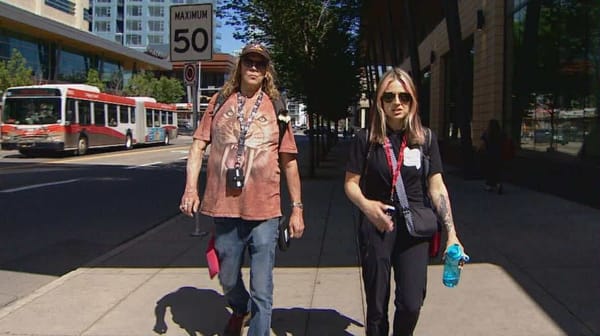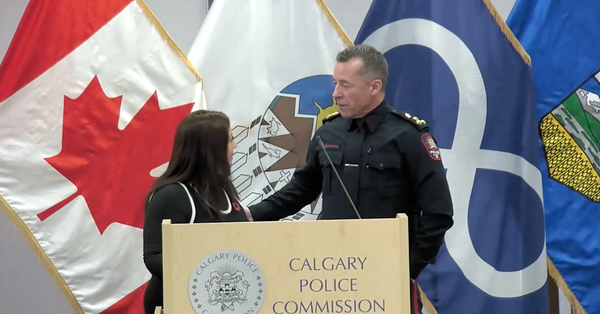Q2-2023 likely to be worst on record for unregulated drug toxicity in Alberta
April, May and June will likely rank among the five highest mortality counts for unregulated drug toxicity and quarterly deaths could exceed the previous high by 15%.
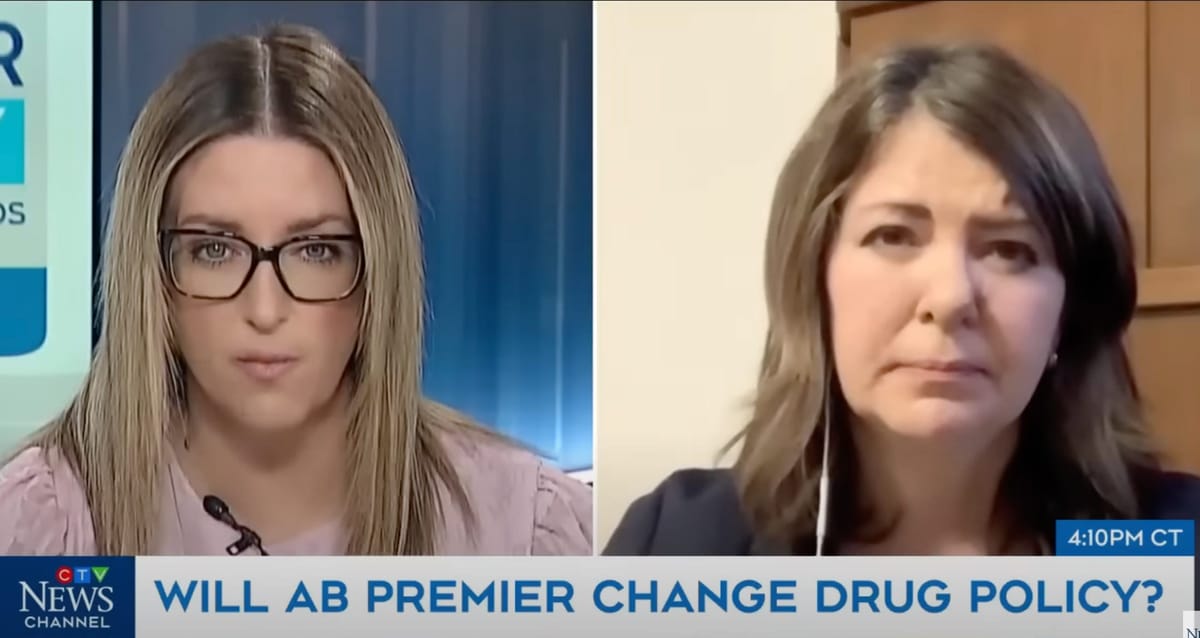
July 6: Quick update on this story… On July 5, EMS dispatch data were updated and revealed that the final week of June broke another record for opioid poisoning dispatches — by a margin of 22%. We are truly in uncharted territory with no ability of leadership to admit its error and reverse course to minimize deaths using evidence-based harm reduction measures while this wave of toxic drugs washes over the province.
Last week, the Alberta Government finally released drug toxicity statistics for February, March and April. They kept these counts under wraps through the election while trumpeting the successes of their Alberta Model, a framework that maximizes profits for addiction centres through coordination with police while minimizing non-carceral, harm-reducing options such as supervised consumption and safe supply.
The news was devastating: February-April contained the highest, fifth-highest and ninth-highest monthly death tolls for opioid toxicity on record.
These monthly counts will climb by around 10% following medical examiner updates. This means they may wind up as the highest, second-highest and fifth-highest mortality counts on record.
But the situation continues to spiral. Have a look at the weekly EMS dispatches for opioid poisoning events from January 2018 to June 2023. We’re now regularly exceeding 250 dispatches per week for opioid poisonings:
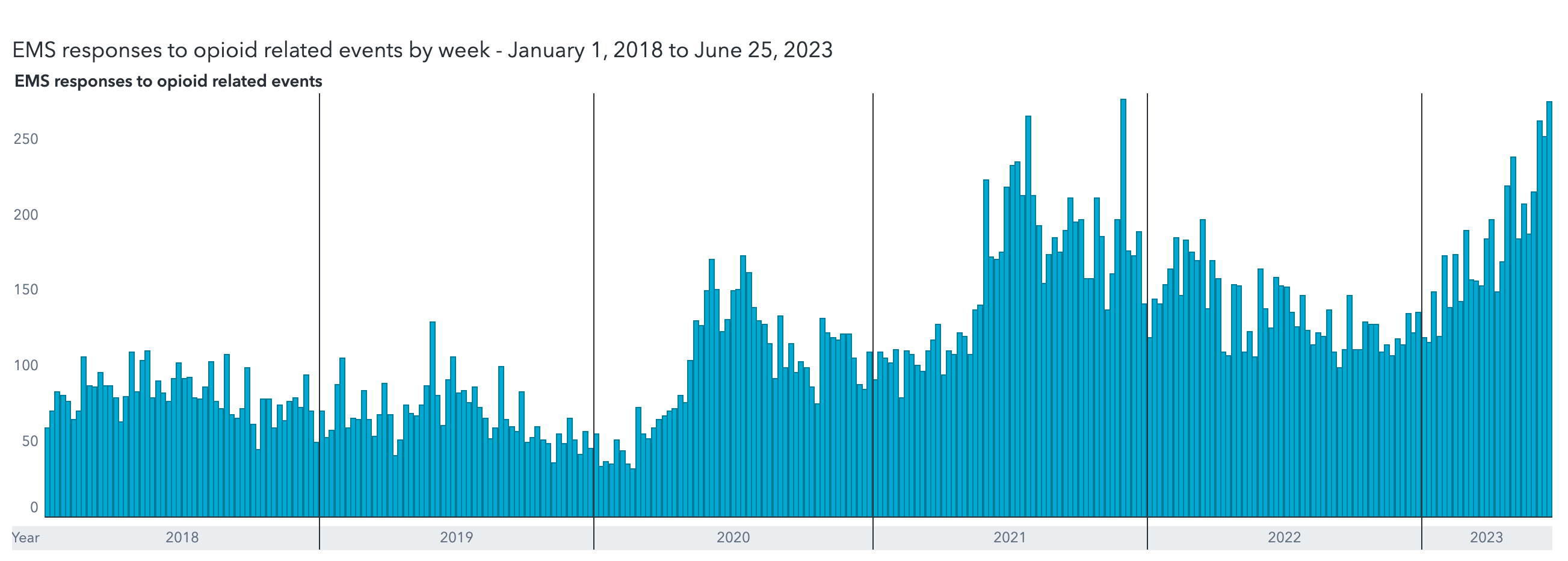
EMS dispatches for opioid toxicity hit their second, fourth and fifth-highest counts on record in the three most recent weeks.
What does this mean?
We know there’s a close correlation between quarterly mortalities and EMS dispatches, so we can attempt to forecast the quarterly and monthly mortality counts while the Alberta Government sits on the data until this fall or beyond.
Here are the two datasets plotted together by quarter:

Statistically, it’s a near-perfect relationship: because EMS dispatches are already showing the highest on record, the second quarter of 2023 will likely also be the highest mortality count on record. Meanwhile, after medical examiner updates, the first quarter of 2023 will likely show the third-highest mortality count.
By this analysis, we can estimate that 2,780 EMS calls for opioid toxicity in the second quarter of 2023 could translate to 634 drug toxicity deaths this quarter. This would exceed the previous high of 549 deaths in the fourth quarter of 2021 by 85 deaths.
Adding 10% from medical examiner updates to the recent data shows April reaching nearly 200 deaths — a threshold that has yet to be breached for a single month in Alberta. May is expected to show a small reduction from April - we can estimate 195 deaths based on the reduced drug toxicity rate observed at Safeworks in Calgary, but sustained uptrend in EMS dispatches through the month. For June, we could see upwards of 240 deaths. This fits the weekly EMS dispatch trend.
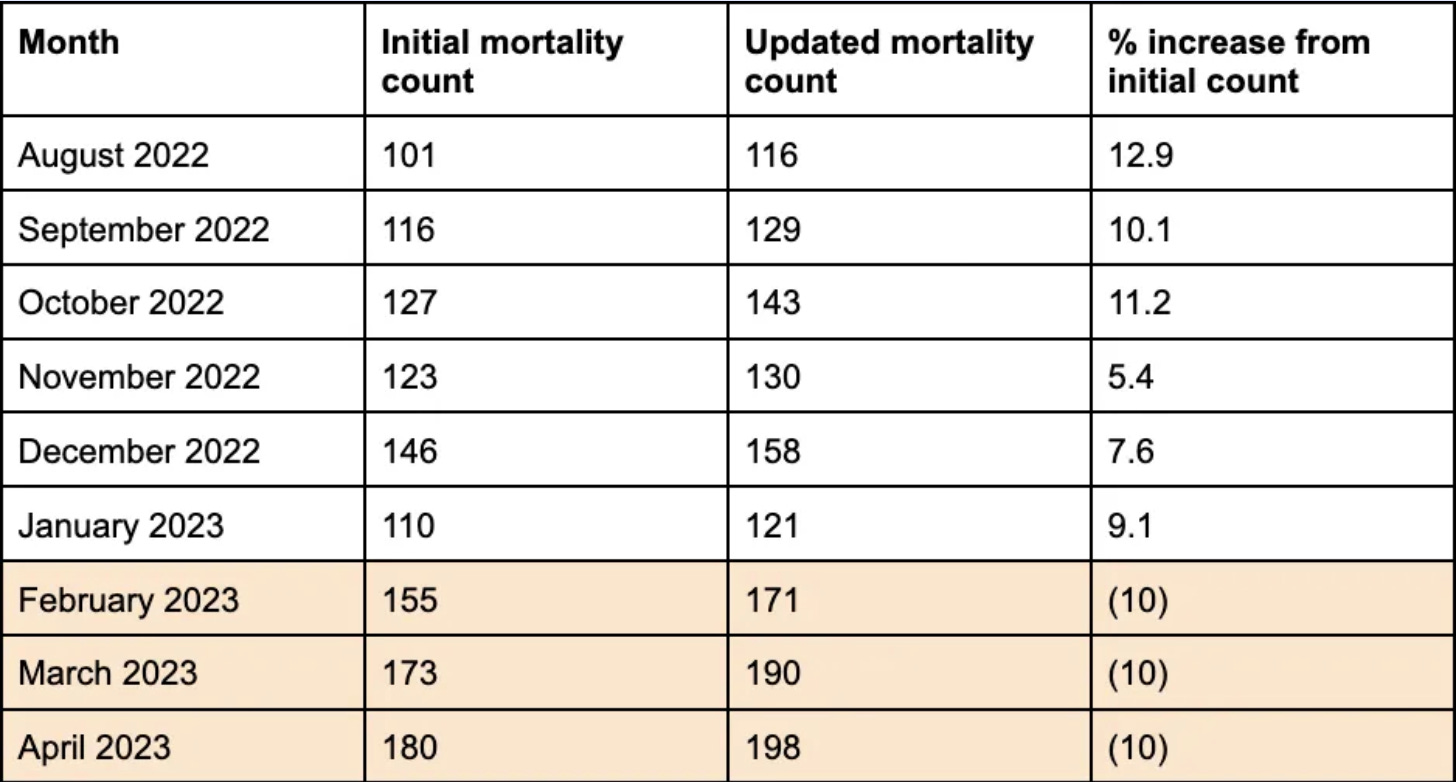
These estimates are based on hard numbers that carry margins of error. If we apply the same predictive equation to 2018-2022 data, the average error by quarter is 10.1%. Three of those 20 quarters had error margins between 20 and 30%.
So based on all this data and the margin of error, the mortality count for the second quarter of 2023 could be 634 +/- 63 human lives. It is near-certain that April, May and June will all rank among the top five-highest mortality counts on record for unregulated drug toxicity.
What do we do about it?
As I recently outlined with Michelle Robinson, Terrill Tailfeathers and Will Cardinal, these deaths are falling most heavily on Indigenous communities across Alberta — urban and rural, housed and unhoused. Convincing Albertans that Indigenous deaths are their own moral failure is a land occupation strategy.
So we need to recognize the mechanism at play: nothing short of a modern twist on genocide cloaked as the War on Drugs. Reject all framing of this crisis by police chiefs, politicians and privatized addiction centres as being rooted in ‘addiction.’ As Nate Pike helpfully pointed out on The Breakdown, our premier is getting her information from alt-right activists, not from experts.
It’s not an addiction crisis, it’s a poisoning massacre.
Meanwhile, “recovery” should not carry a singular definition. We attempted to deconstruct this alongside “treatment” back in February, before we protested the Alberta Recovery Conference:
“Recovery” is a non-linear, socially constructed practice, and success is contingent on an individual’s goals related to drug use. “Treatment” is an evidence-based medical practice that insists on verifiable, objective medical outcomes, evaluation, accountability and voluntary consent.
Right now, Alberta is attempting to frame “recovery” as abstinence from drugs. This is wrong: many people consider themselves in recovery while continuing to use drugs, albeit less chaotically for themselves or those around them.
Meanwhile, most politicians, journalists and health care workers still accept abstinence and 12-step-based residential addiction programs as “treatment” without consideration. This is also wrong: the evidence does not support positive health outcomes of inpatient programming over outpatient. In Alberta, there is a significant Christian skew to the programs on offer, suggesting that some of these may operate more as indoctrination camps than anything resembling treatment. And we don’t have access to any outcome data, so how are we meant to evaluate this approach?
Our public health depends on journalists being informed enough to press politicians on the evidence — both that which is lacking for our chosen approach, and that which exists for the approaches we have abandoned, such as supervised consumption and safe supply (please bookmark those links!). This was on display last week as CTV’s Vassy Kapelos interrogated Premier Smith (starts at 7:40 - with the caveat that *fentanyl is available as safe supply*, and this was pointed out in detail by Nate Pike).
We need people on the inside of our public health system taking risks to get critical stories to the public. How has nobody come forward to explain how the UCP’s chain of command interfered in the Indigenous Wellness Core’s selection of Dr. Deena Hinshaw for a key role in developing a comprehensive drug toxicity crisis response? While the Alberta Medical Association helpfully called for an investigation, this shouldn’t even be necessary: if you are reading this and know something, please talk to a journalist about it.
We also need people ready to mobilize to combat what is certainly coming. The UCP Government is already using the latest drug toxicity numbers to double down on their failed approach. We can expect them to advance their forced abstinence measures under the “Compassionate Intervention Act” — they’ve been signalling this for many months. We can also expect continued co-optation of the Portugal Model of decriminalization while decriminalization is conveniently left out of the picture.
Professional bodies like the AMA can be helpful here: listen to the experts within your ranks who understand what decriminalization is and is not. Ensure the framework that is advanced respects human rights and bodily autonomy. A national body of experts already spelled it out in Decriminalization Done Right. Why let rogue AMA members reinvent the wheel to fit the UCP’s obsession with controlling the lives of people who use drugs? The point is to get cops out of their lives, period.
Speaking of which, we need Calgary Police Commission to stand up in some meaningful way that helps protect people who use drugs from the political interference clearly on display by the UCP. There is no way that Dr. Robert Tanguay should be on Commission while he sells mental health services to Calgary Police members. I don’t know how else to spell C-O-N-F-L-I-C-T—O-F—I-N-T-E-R-E-S-T.


